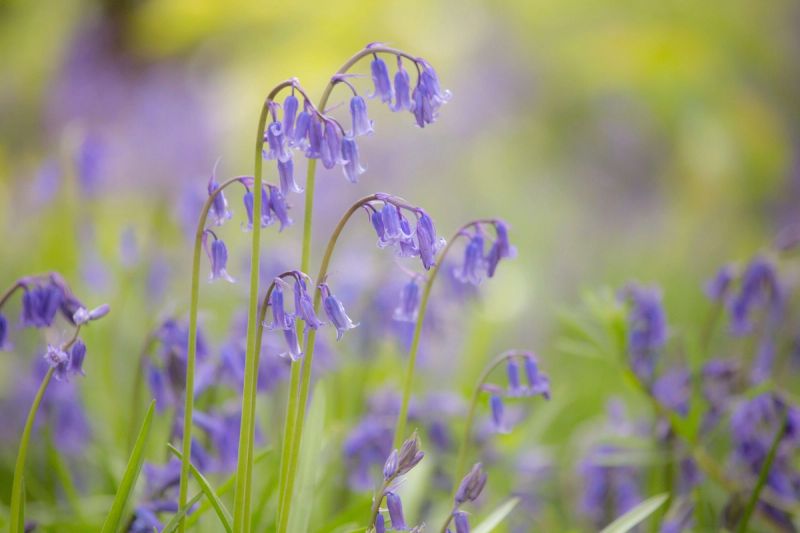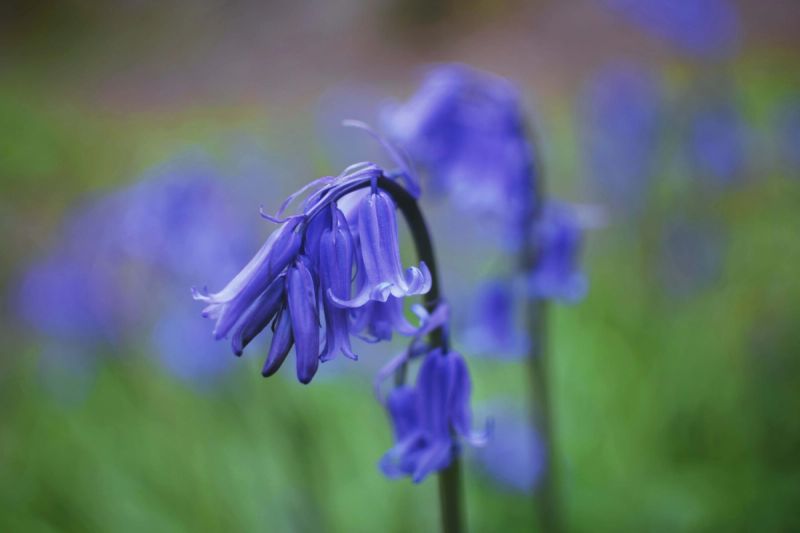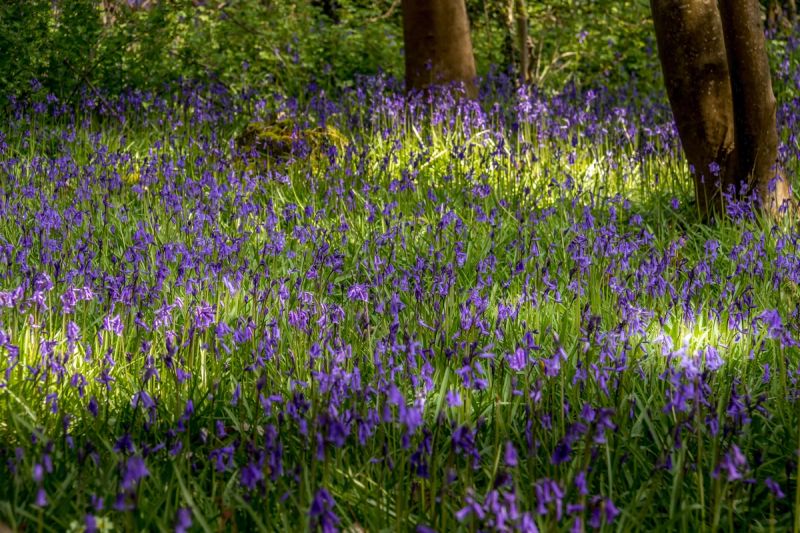When to plant bluebell bulbs
Breathtakingly blue, bluebells add a layer of enchantment to our woodlands in spring. Here’s how to recreate the look in your garden by planting bulbs.
Why plant bluebell bulbs?
With their powdery blue flowers, bluebells have an ethereal charm and, en mass, add a mystical allure to any garden.
These woodland wildflowers are right at home in a shady spot and will quickly spread and naturalise, creating a sea of spring flowers with a subtle scent in April and May.
Their nodding, bell-shaped blooms provide the perfect pollinator fodder after winter, making them a strong choice for wildlife gardens. They also look picture-perfect in cottage gardens and tree-filled dells.
Plant the bulbs of this quintessentially British bloom through lawns and long grass or pack them into pots for a bluebell bonanza in spring.

English bluebells vs Spanish bluebells
There are two types of bluebell in the UK: our droopy-headed, native English bluebells (Hyacinthoides non-scripta) and a larger, more upright Spanish variety (Hyacinthoides hispanica).
Both are gorgeous, however, the Spanish variety has a nasty habit of rampantly cross-breeding and ousting the native variety. It’s leading to a very real decline in English bluebells. To avoid any dramas, we’d advise sticking to English bluebells only in your garden.
When to plant bluebell bulbs
Bluebell bulbs are best planted in autumn, so they’ll be ready to flower in April and May.
You can also plant bluebells ‘in the green’ in spring (after they’ve flowered, but before the foliage dies back) to help them get established more quickly.
Top tip: It’s illegal to dig up bluebells from the wild, so make sure you get any plants ‘in the green’ from your own garden (once they’re established, obvs) or from a responsible retailer.

Where to plant bluebell bulbs
If you’re wondering, ‘what do bluebell bulbs look like?’, as with most bulbs, they’re little, onion-shaped nuggets.
These little bundles of bulby potential aren’t overly fussy but do best in damp, free-draining soil and compost, especially if it’s had a few handfuls of leaf mould, well-rotted manure or garden compost mixed in.
Bluebells are usually found in the woods, so they’re suited to life in the shade of deciduous trees and shrubs (the kind that shed their leaves in autumn).
Planting bluebells in the ground
Planting bluebell bulbs couldn’t be easier:
- Chuck a handful of bluebell bulbs over your lawn or wildflower patch to get a naturalistic look. (Top tip: Choose a small-ish section. Throw them too widely and - we speak from experience - you’ll probably lose track of a couple.)
- Use a bulb planter or a trowel to make holes where they land. Aim to go 15-20cm deep.
- Plop a bulb in each hole with the pointy tip up.
- Cover each bulb over with soil and treat them to a drink of water. Job’s a good’un.
Fancy planting bluebells ‘in the green’? Wait until the flowers have faded in spring. Before the foliage dies back, dig the plants up. Divide the clump and make holes in the ground where you want to rehome them. Plant them so that the white stems and foliage are underground, then backfill with soil and give them some water.


Planting bluebell bulbs in pots and containers
If you don’t fancy letting bluebells romp freely in your garden, plant your bulbs in pots to enjoy a smaller, but no less beauteous display.
- Find a pot with drainage holes and half-fill it with peat-free compost. Mix in some leaf mould or well-rotted manure if you can.
- Place the bulbs on the surface and cover them up with compost so they’re at least 15cm deep (if in doubt, deeper is fine).
- Fill up your watering can and give your freshly planted bluebell bulbs a soak.
Bluebell bulb care
There’s not usually any need to water ground-dwelling bluebells unless it’s been super dry. Bulbs in pots might need a splash now and then as they’ll lose moisture more quickly.
For bluebells in grass, wait to mow until the leaves have totally died back so they can continue to photosynthesise and gather strength for next year.
Bluebells spreading faster than you’d like? If they’re taking over in a way you’re not happy with, wait until they flower, then dig up the bulbs. Don’t stick them in the compost bin, or the lovable scoundrels might just keep growing in there. If you’re worried that bluebells might be too brutish for your garden, camassias are a piercingly blue, better-behaved alternative.